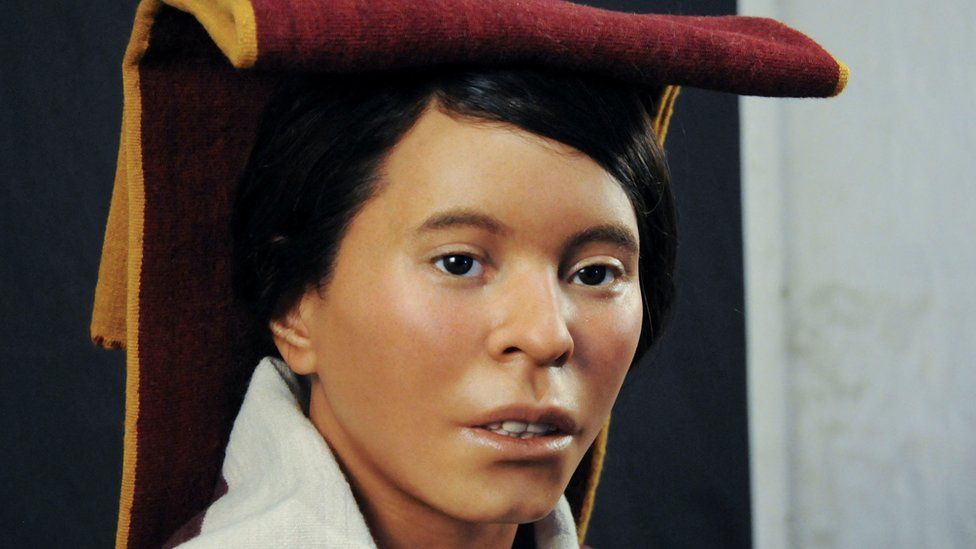In the 16th century, between 1440 and 1450, a young woman was sacrificed to please the gods amid the mighty Inca empire. High in the mountains, this young woman had to wait patiently for someone to discover her and tell her story. 500 years later, in Arequipa Peru, mountain archaeologist Johan Reinhard and climbing partner Miguel Zárate, found the frozen body of the same girl in a perfect state.
They called her “The Ampato Lady” or “Momia Juanita.” Since then, Momia Juanita has become one of the world’s most intriguing archaeological finds. She offers us valuable insights into ancient cultures and people’s lives from long ago. Let’s explore her story together and discover what makes her so unique!
Who was She?
Momia Juanita, or the “Inca Ice Maiden,” was a young Inca girl who lived around 1450, more than five centuries ago. She belonged to the incredible Inca empire, the largest and most powerful empire in the Americas. Probably, Juanita came from an important family, as her life ended with a special ritual. Her clothes and jewelry suggest she was a noble or a princess, highly regarded in her community.
Scientists estimate she was about 12 to 15 years old when she passed away. They believe she was chosen for a vital role in a religious ceremony called a “capacocha” sacrifice. This ceremony consisted of offering children as a sign of devotion. The children selected for this ritual received great care and respect, wearing beautiful clothing and jewelry.
The Inca believed that by making this sacrifice, they could build a stronger bond with the gods. Priests thought Children like Juanita that they’ll join the gods after their passing, watching over and protecting their people. The Inca had a rich belief system centered around many gods, whom they thought influenced nature.
Thanks to their cosmovision, they believed mountains were sacred places where they could connect with these deities. During difficult times, such as droughts or natural disasters, the Inca held ceremonies to honor their gods, seeking peace and prosperity for their community.
What Studies About Juanita Revealed
When scientists discovered Juanita in the Ampato Volcano, carefully brought her down the mountain to learn about her story and understand her sacrifice. Using advanced scanning techniques like CT scans, along with the assistance of Researchers at Johns Hopkins University examined her body and found fascinating details.
The scans showed that Juanita had a head injury, which likely contributed to her passing. When they found the mummy, she was seated, wrapped in beautiful clothing, and surrounded by special offerings like small statues, sea shells, and other meaningful artifacts from Inca culture. By studying her clothing and the items around her, scientists gained valuable insights into Juanita’s life and the Inca world.
One point that drew the discoverers’ attention was how well Juanita’s body was preserved. While many mummies are dried out or wrapped in cloth, Juanita’s body remains frozen due to the high altitude and cold temperatures of Mount Ampato. The cold kept her from deteriorating, and the lack of oxygen at that height also helped to preserve her.
As a result, Juanita is among the best-preserved mummies ever discovered. Her features, hair, and skin appear almost identical to when she was alive. This remarkable preservation allowed scientists to learn even more about her life, including her diet. By examining her stomach, they discovered that she had eaten a meal of vegetables before her death. This meal may have been part of the preparations for her journey to the mountaintop.
Face Reconstruction
Last year, the Andean Sanctuaries Museum of the Catholic University in Arequipa, exhibited a lifelike silicone bust of Juanita. This incredible sculpture features striking black eyes and high cheekbones that wonderfully pay tribute to a remarkable young girl.
This project was thanks to a team of Polish and Peruvian scientists and the Swedish archaeologist and sculptor Oscar Nilsson. Using a CT scan, Nilsson thoughtfully studied her facial structure, then skillfully sculpted her face in clay, dedicating over 400 hours to creating her likeness in silicone.
The finished bust offers a stunning and lifelike representation of her appearance, encouraging us to reflect on her story and the rich culture she embodies.
Juanita Today
Researchers at the catholic university of Santa Maria in Arequipa kept her in The Center for Andean Studies museum, where you can see her. They kept her in a glass case at very cold temperatures to preserve her just as she was found. Today, people from all over the world visit to learn about her fascinating story.
Although people didn’t realize the importance and magnitude of her discovery, Juanita is an exciting breakthrough in archaeology: We can affirm she’s more than a mummy, she’s like a time capsule that shows us the beliefs, life, and rituals of ancient Peruvians.
Juanita’s journey, from a young Inca girl to a great find, is inspiring. Her story invites us to appreciate the ancient world and sparks our curiosity about future discoveries. If you love history, science, or a good tale, Momia Juanita’s story will spark your imagination. It brings the past closer to us.
To learn more about stories, places, and mysteries of the Andean country, remember that you can always take a look at our blog! If you want to discover in situ all of these places, remember that you can count on Viagens Machu Picchu.
We’re a reputable travel agency, and our more than 100,000 clients can confirm we strive to offer the best service to our clients. Contact us to know more about your trip to Peru, the land of Juanita, and more.
Viagens Machu Picchu, journeys that inspire, moments that last.

